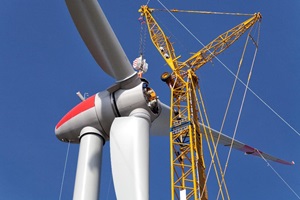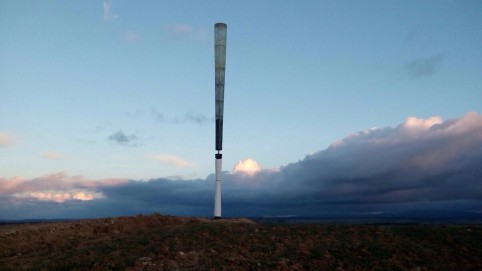- Energy Technologies
- Energy Technologies
- Wind Turbines
- Bladeless Wind Turbines
Evaluating New Frontiers in Wind Energy: Saying Goodbye to Blades, Part 1

This blog is part one in a series evaluating new techniques in extracting power from wind.
Wind power is no different from any other energy technology in that it is constantly evolving and the quest to find the most efficient and cost-effective method is seemingly never-ending. As a result, there is no technology or design that is off-limits as long as it effectively creates power from wind. For over 3 decades, the bladed turbine has been the default technology in the market. To put it a better way, it has been the only technology in the market, and for good reason. It is effective and it has been researched and tested by hundreds of companies for years.
The bladed turbine has established a firm foothold in the wind power industry, and it isn’t going anywhere. That being said, it has been brought up that the advancement in efficiency of bladed turbines has begun to plateau. Whether or not this is truly the case, the notion has inspired engineers around the globe to break the mold of traditional wind power. One idea has been to get rid of blades altogether.
Vortex Bladeless
One startup that is looking to capitalize on this concept is Spain-based Vortex Bladeless. Still in the R&D phase, the company developed a narrow, cone-shaped structure to siphon power from the wind. The concept is completely different from the traditional bladed turbines which, simply put, use wind to turn the blades, which rotates a shaft and runs a generator. The Vortex design creates turbulent eddies in the wake of the tower. These spinning vortices create an oscillation, typically a no-no in the architecture and engineering world as it induces unwanted stress on the surrounding structures. Vortex, however, is using these oscillations to generate electricity using an alternator that multiplies the oscillation frequency.
Vortex Bladeless Tower Design
(Source: Vortex Bladeless)
Market Skepticism
The company advertises two different systems: the Vortex Mini and the Vortex Gran. The former is a 4 kW system and the latter is (supposedly) capable of producing 1 MW+ of power. The benefits of these machines, according to Vortex, are that they cheaper to build and maintain due to fewer moving parts and less wear and tear. Furthermore, the company says they are quieter and more environmentally friendly. These claims have yet to be fully vetted and some are already showing skepticism. It is too early to really confirm or deny the company’s claims of a 53% reduction in manufacturing costs and 51% reduction in operating costs. Initial concerns stem from the fact that the oscillation frequency would continuously change as the wind speed fluctuates and thus the frequency of the electricity generated would be nearly impossible to control or predict. It would require a complex and likely very expensive electronic control system in order successfully export this power to this grid. History doesn’t appear to be on Vortex’s side, as a similar concept was introduced several years ago and never made a dent in the market.
The Spanish startup claims to have raised $1 million from private donations and government funding and is hoping to complete a round of donations in the United States. Additionally, Altair has stepped in to provide support in the form of free software licenses and training. Altair’s finite-element analysis and computational fluid dynamics packages are expected to help Vortex move toward a more simulation drive approach in their design. There are some favorable signs for Vortex to become a legitimate market presence in the wind industry, but the company has a long road ahead. A 100 W prototype is in development and the 41-foot Vortex Mini is expected to be ready by 2018. The company must overcome countless obstacles before inking a contract is even conceivable, and winning over the skeptics might be the biggest challenge of all.
